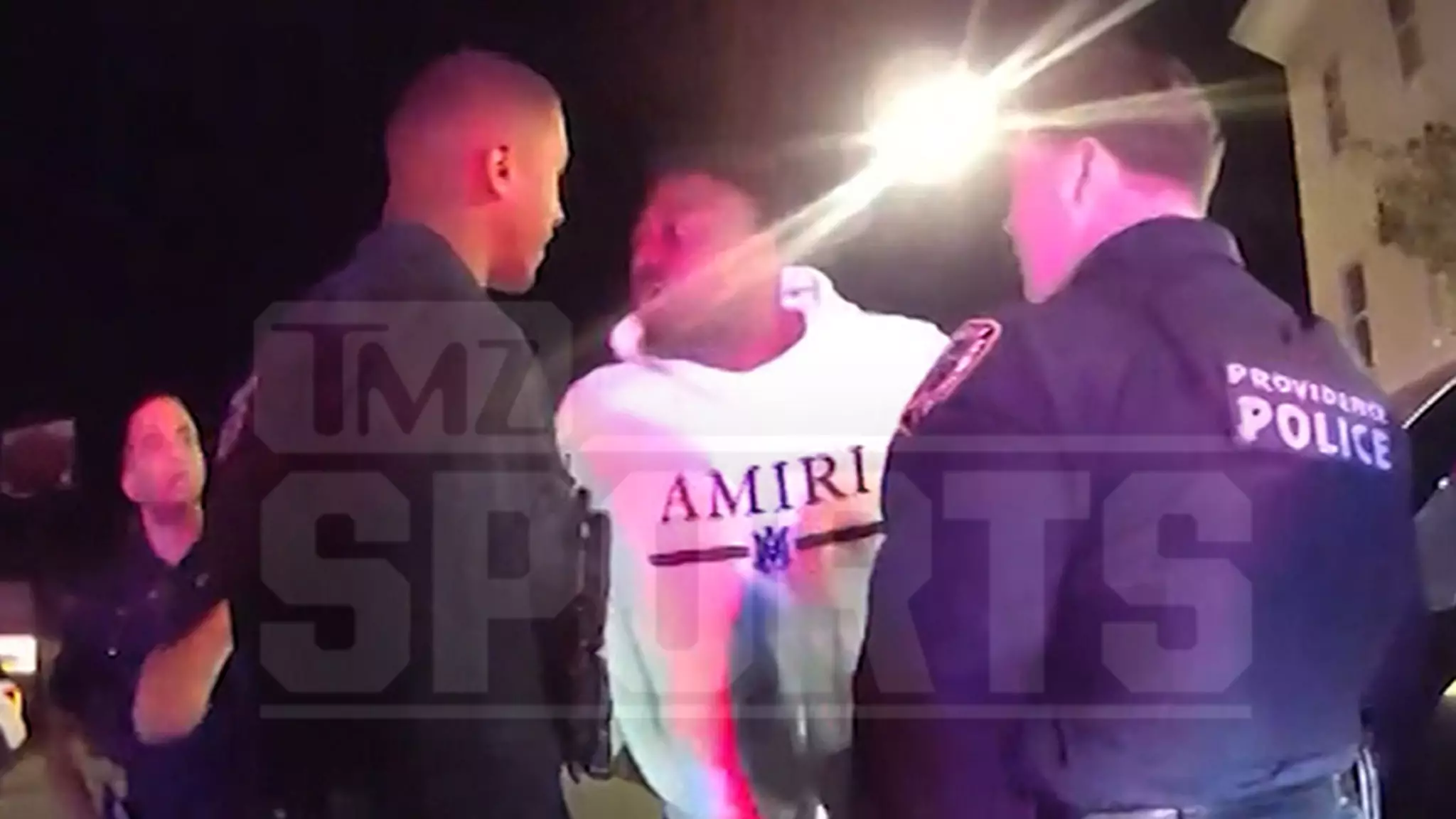On a seemingly routine Wednesday night, professional football player Christian Barmore experienced what he described as a racially charged encounter with Providence police during a traffic stop. This incident, capturing significant attention on social media, raises vital questions about the relationship between law enforcement and communities, particularly in terms of perceived racial biases and the conduct of police officers.
Christian Barmore, a talented defensive tackle for the New England Patriots and a former second-round draft pick, engaged in a public confrontation with police after being pulled over in Providence. The case began with a routine traffic stop, which can often trigger an array of emotions for anyone involved. However, Barmore’s accusations of unprofessional behavior and racism quickly escalated the situation, highlighting the charged atmosphere that often accompanies such interactions, particularly for Black individuals.
The episode began when police approached Barmore’s Jeep Grand Cherokee, already parked by the roadside. He openly questioned why he was being stopped, asserting his identity and status as a professional athlete. However, the narrative took a turn as law enforcement discovered that Barmore’s vehicle was unregistered, leading them to inform him that it would be towed – a development he vehemently opposed.
An essential aspect of this situation is the release of police body camera footage, which revealed a different perspective than Barmore’s initial claims. Footage presented by the Providence police documented the exchange, indicating moments of defensiveness and aggression from the athlete. Barmore was seen resisting the police’s request and issuing confrontational remarks, which further complicated the tension of the encounter.
The police claimed Barmore failed to comply with initial traffic stop signals, an assertion backed by one officer stating they had to follow Barmore for several minutes before he acknowledged their presence. The law enforcement officials maintained that their focus remained on upholding the law concerning vehicle registration, an essential responsibility for the safety of the community.
Repercussions of the Incident
The back-and-forth between Barmore and the officers escalated to the point where police approached the vehicle to request him to exit. The situation intensified, with Barmore using derogatory language in response to their commands, raising questions about the appropriate behavior expected from both parties during confrontational moments. As tensions peaked, police conducted a search of the vehicle, which yielded illicit substances, including marijuana products. Despite this, no criminal charges were placed on Barmore related to the discovery.
Eventually, Barmore left the scene without being arrested but was issued several citations for vehicle-related violations. These citations included operating an unregistered vehicle and driving with an expired registration, which once more illustrated the legal ramifications of the incident, independent of the accusations directed against the police.
Reflections on Racial Dynamics in Law Enforcement
Such encounters dismantle the often-simplistic narrative of police versus civilians into a more nuanced examination of racial dynamics, authority, and compliance. Barmore’s claims of racism are serious and require thorough examination, especially within the current socio-political climate that demands accountability from law enforcement agencies. However, the unidentified areas of accountability for the actions of individuals, regardless of their status or occupation, also cannot be overlooked.
Moreover, this incident underscores the complexities of racial profiling discussions, where feelings of victimization can intertwine with actual violations of law. It raises the question of how individuals from marginalized communities perceive law enforcement’s actions and decisions, even when those decisions may look justified from a legal standpoint.
Ultimately, the incident involving Christian Barmore serves as a crucial reflection point in discussions surrounding police interactions, racial perceptions, and the necessity for dialogue within communities. Context is imperative—while some may deem the police responses as signs of systemic issues, others may argue that regulatory enforcement must remain uncompromised.
To bridge the divide, it is essential for both law enforcement and community members to engage in open dialogues to foster understanding and build a foundation for trust, ensuring that all voices are heard and validated. It signifies the need to address both the emotional and legal dimensions intertwined in such encounters, paving the way for more constructive relations in the future.


Leave a Reply